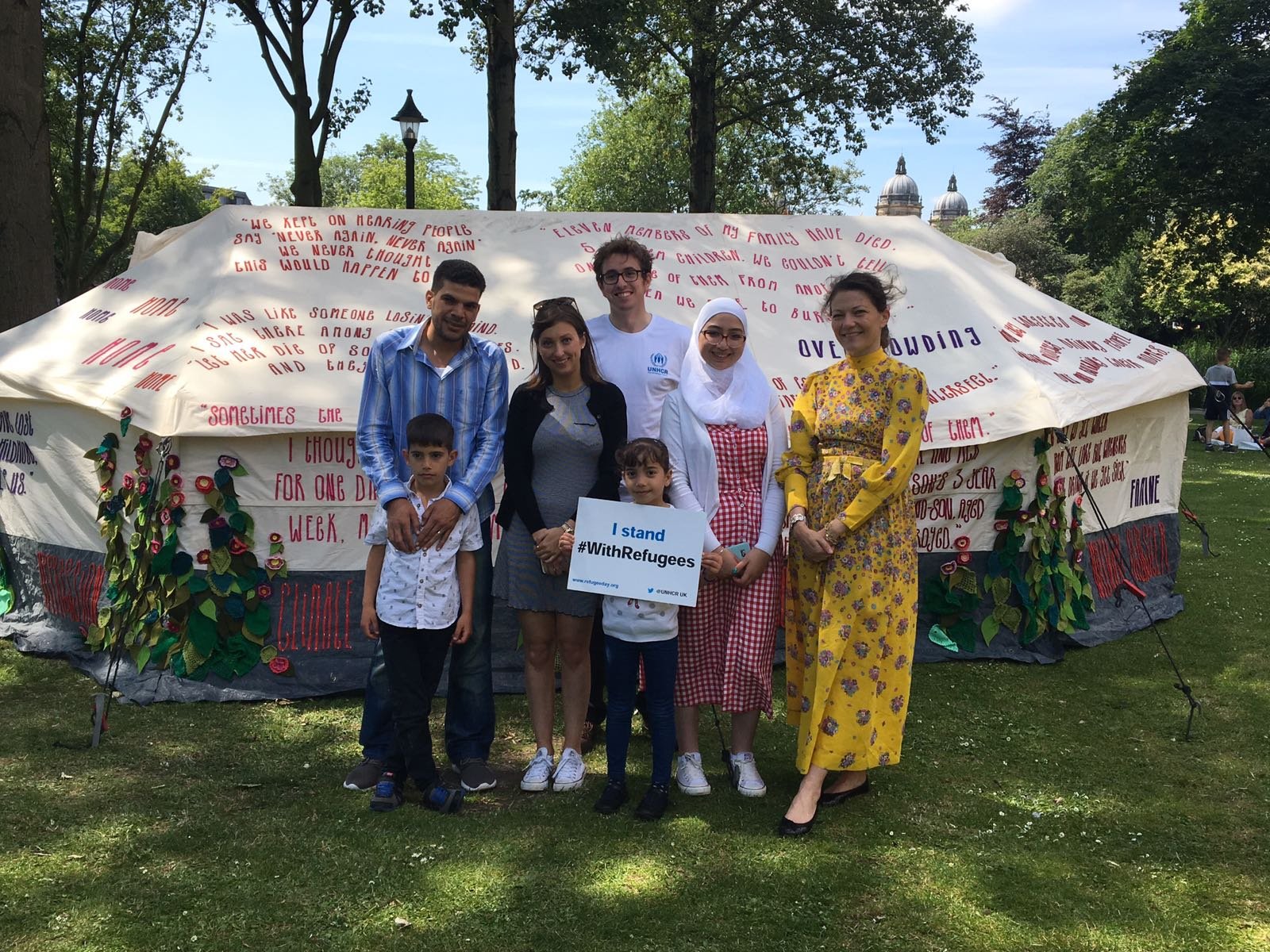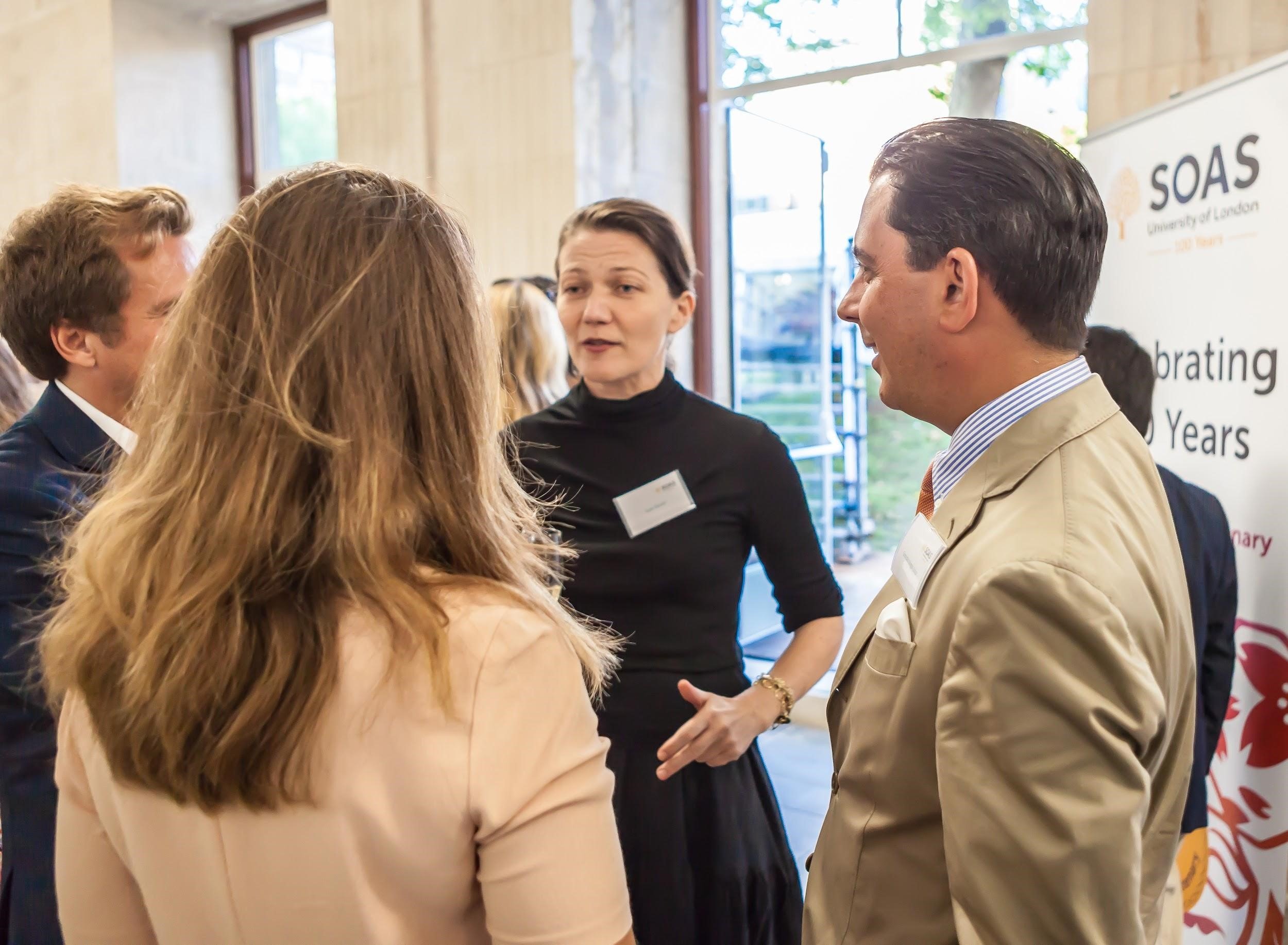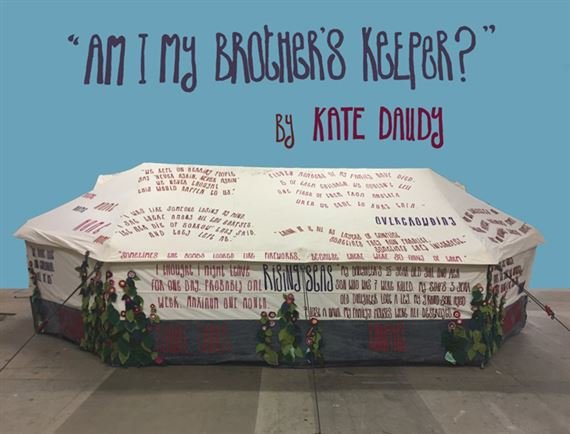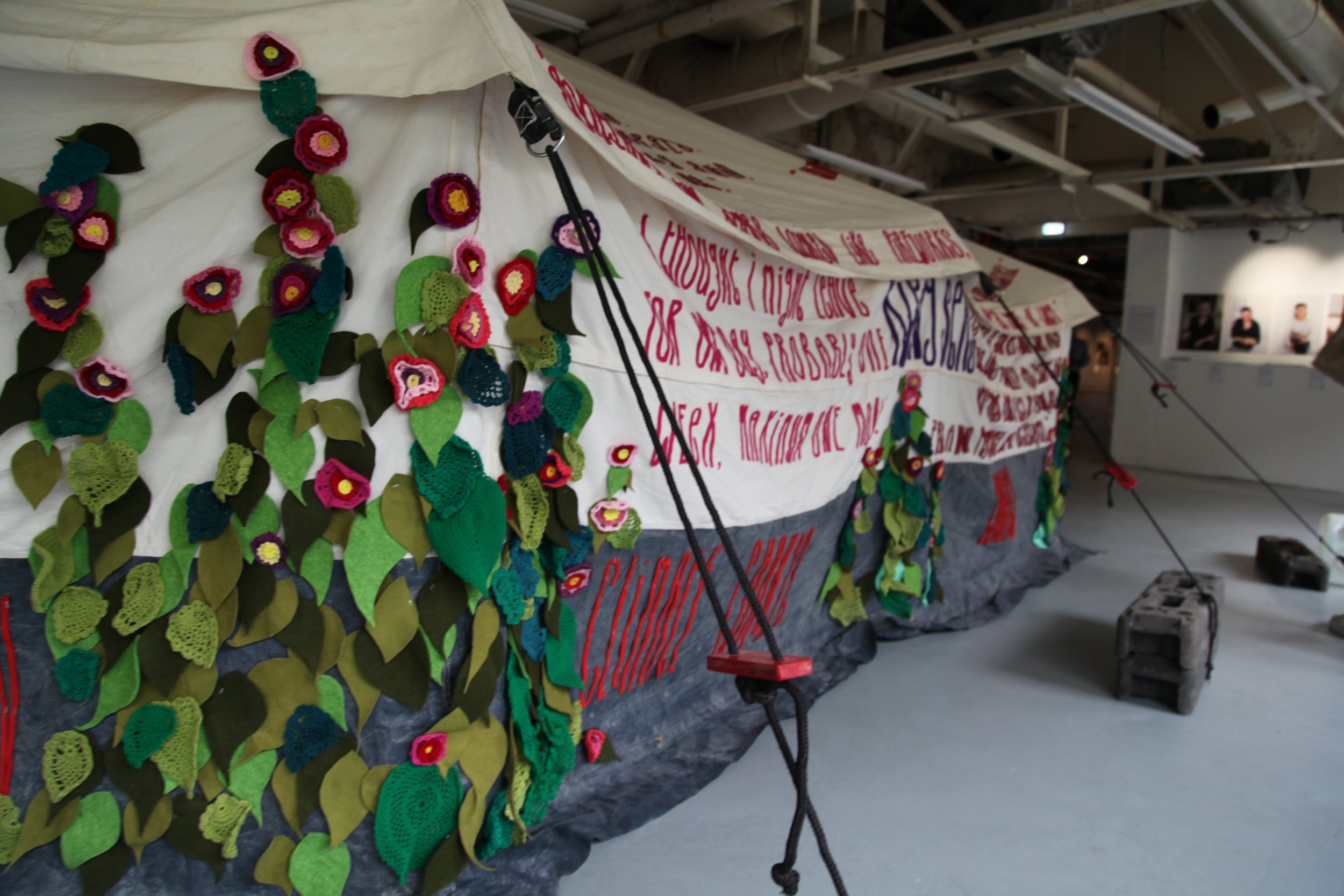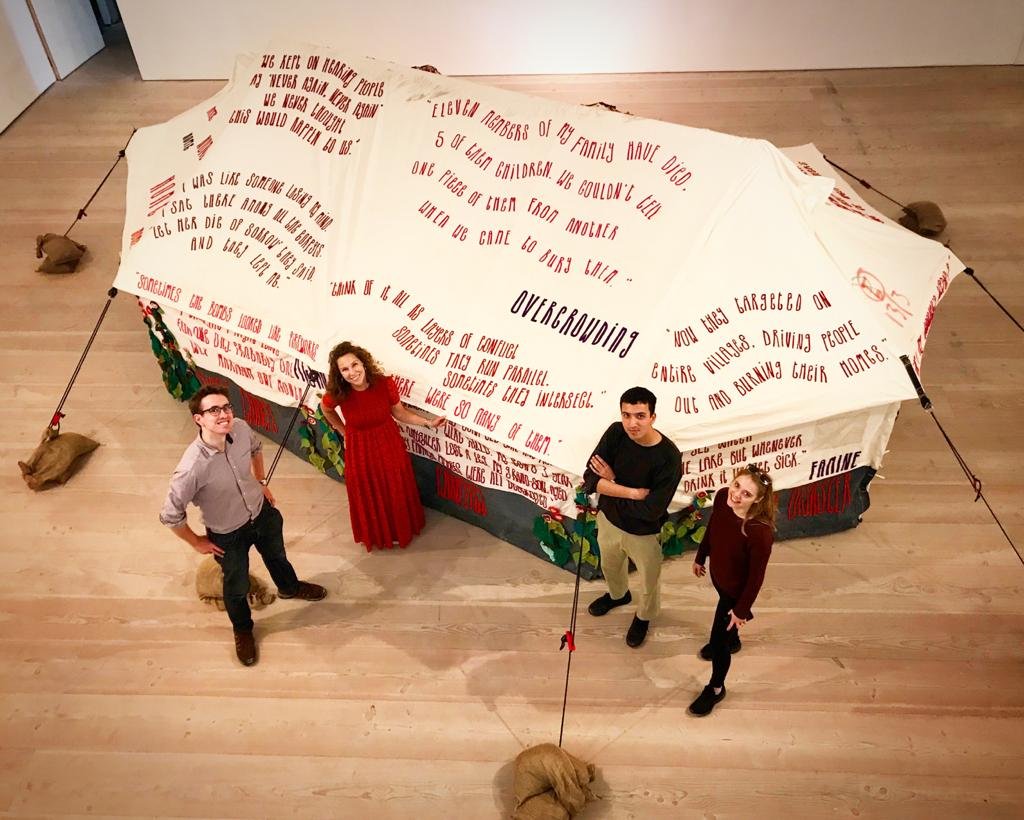AM I MY BROTHER’S KEEPER?
In early 2016, thanks to the Spanish arts organisation ONUART, Daudy was given a used tent from Zaatari Refugee camp in Jordan, with which to create an artwork.
UNHCR organised for Daudy to visit several camps on different occasions, and she also met with activists, war-wounded, volunteers, doctors, diplomats and other aid organisations, from nearly 60 nations, asking them about their experience of the refugee crisis, and their observations about home and identity rising from it. She also asked them what lessons could be learned from their trauma and loss, that might be usefully shared through the medium of the tent.
The courage, perseverance and dignity of the people she met struck Daudy deeply, and these positive core human qualities along with the terrible collateral results of war, climate change, hatred and violence, which the refugees have gone through have become the overriding message of the tent. We can all help one another. We are all connected. Our life is what our thoughts make it.
The crochet elements of the tent are made by internally displaced women women in Syria, providing a revenue for them. Daudy commissioned the circles to compose the enormous tree of hope, as well as the crochet which compose the bushes of hollyhocks, so that the tent is inscribed with work and words literally of the refugees themselves.
The words are those of refugees, diplomats, aid workers, medical staff and soldiers involved in the refugee crisis. Around the black base are conditions for being defined as a refugee by the UN 1951 Convention for Refugees.
The research in which Daudy engaged for the purpose of the refugee tent led to a series of new chapters in her work, inspired by the people she encountered - both refugees and those individuals connected to them. Daudy embarked upon a prolific campaign of written interventions in public and private places, across Europe, the UK and the Middle East, conveying positive, thought-provoking messages and ideas.
She has written across more than 250 places, from tree stumps to prestigious museums, rubbish bins, fire hydrants, world-famous restaurants, bus shelters, greasy spoons, grocery shops, a refugee registration centre, youth centres, libraries, schools and street corners.
The tent has since travelled and has been shown (as "Am I my brother's keeper?") in venues around continental Europe and the United Kingdom, including the Flagey Building in Brussels, the Iglesia del Seminario and the Hay Festival in Segovia, the Chiesa Santa Rosalia in Palermo, the Migration Museum, the School of Oriental and African Studies, the Saatchi Gallery, and St Paul's Cathedral in London, and the Edinburgh Festival.

